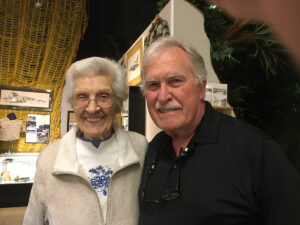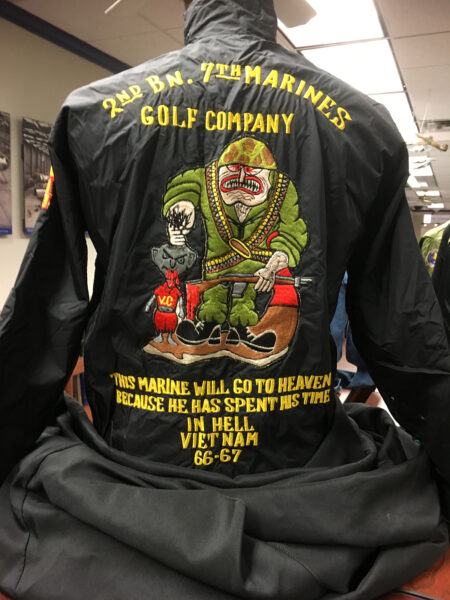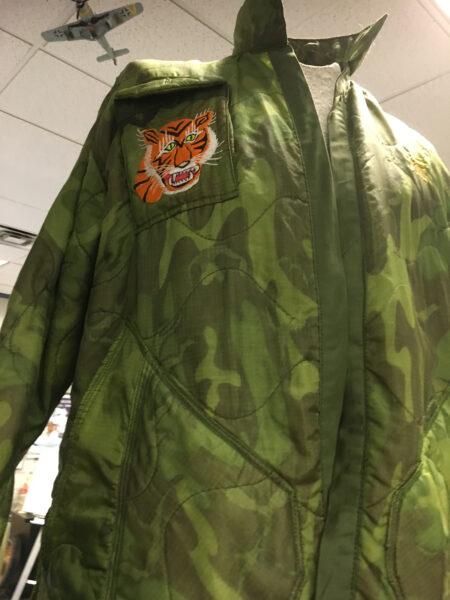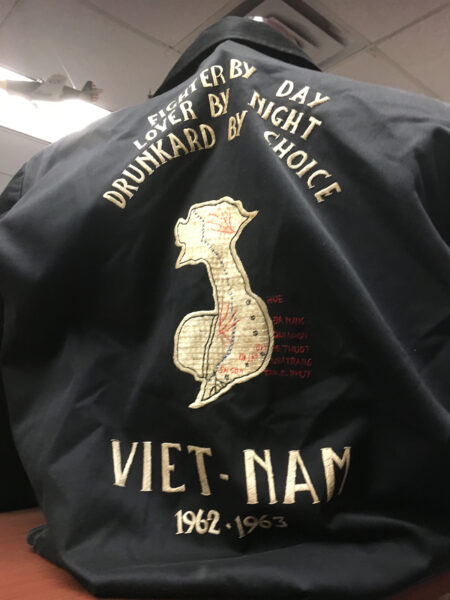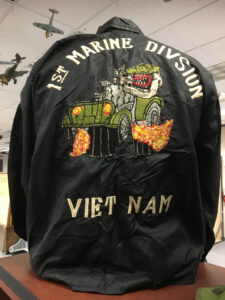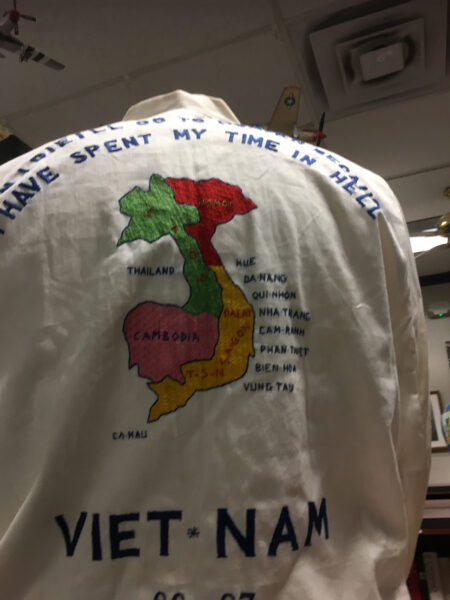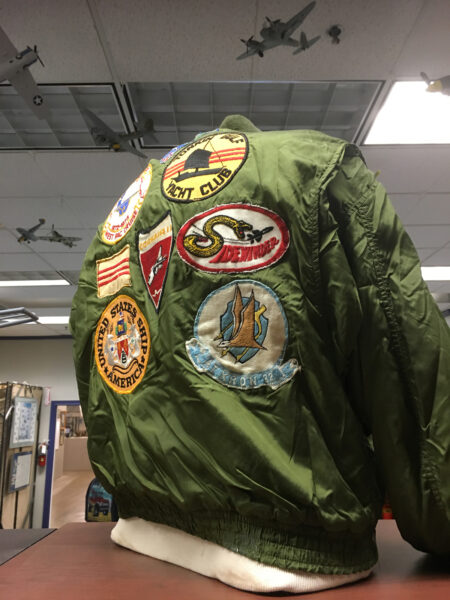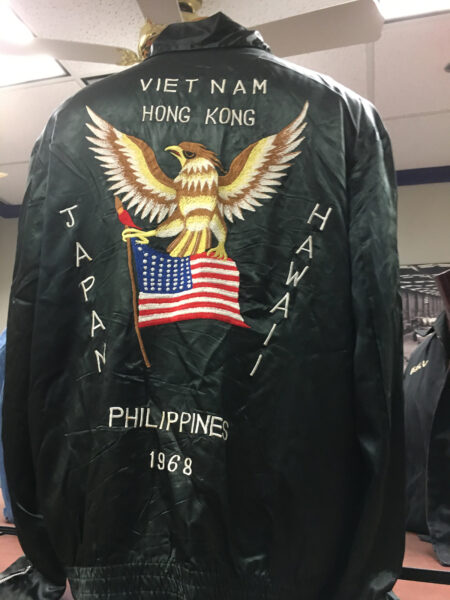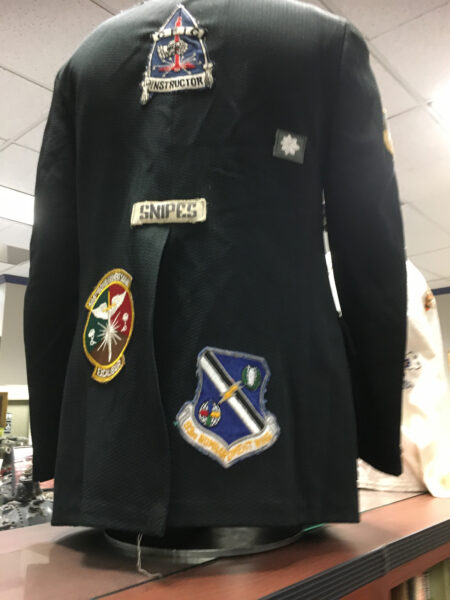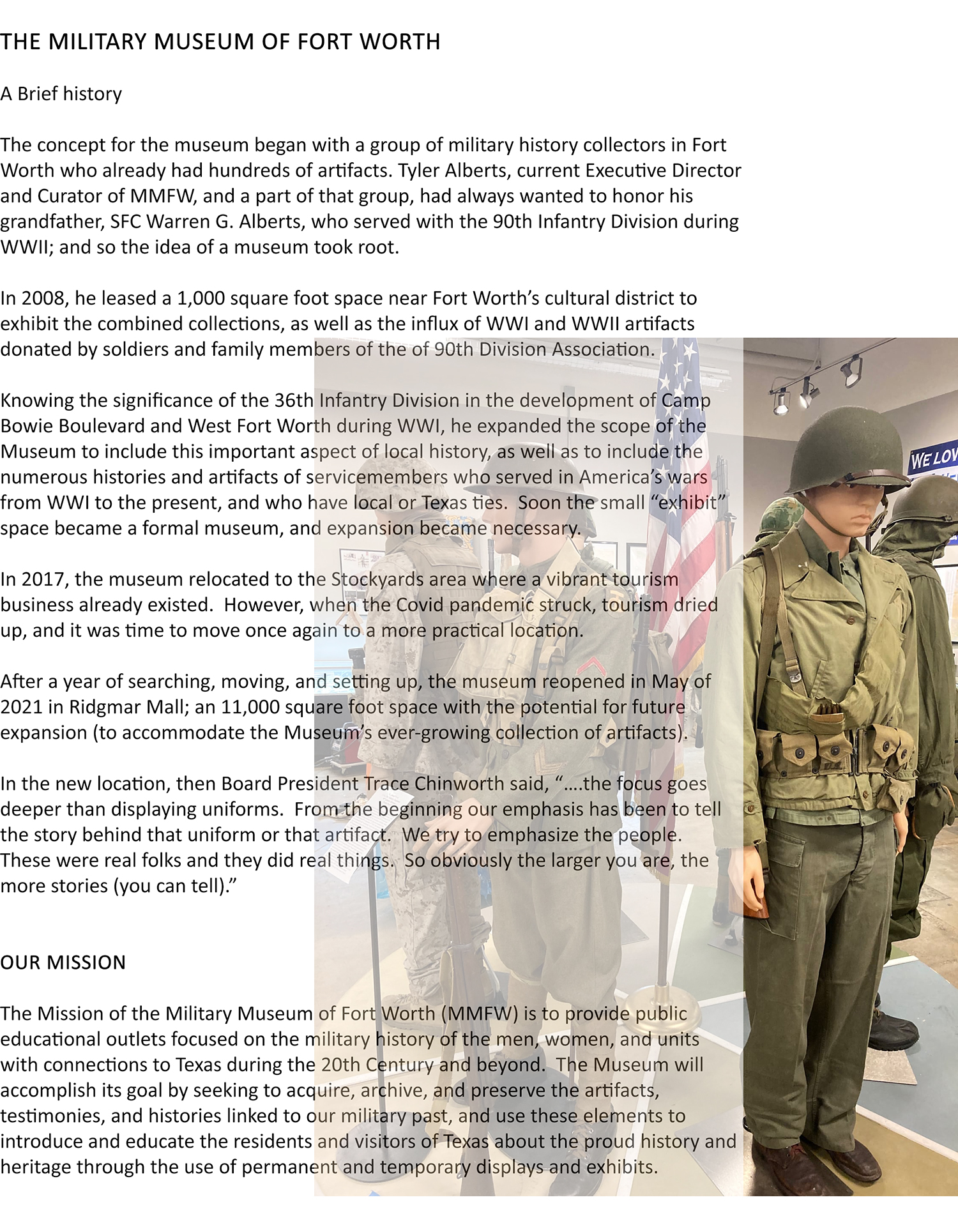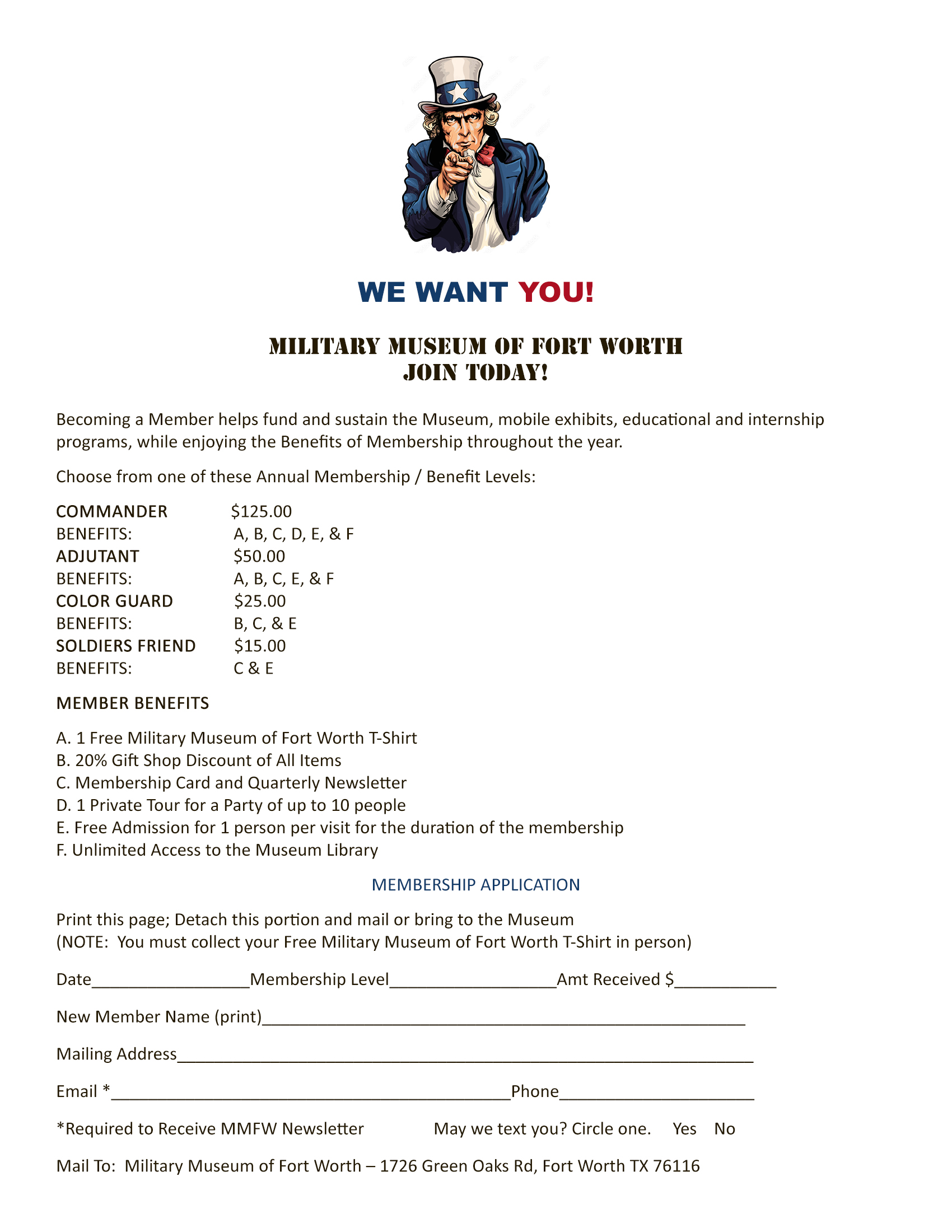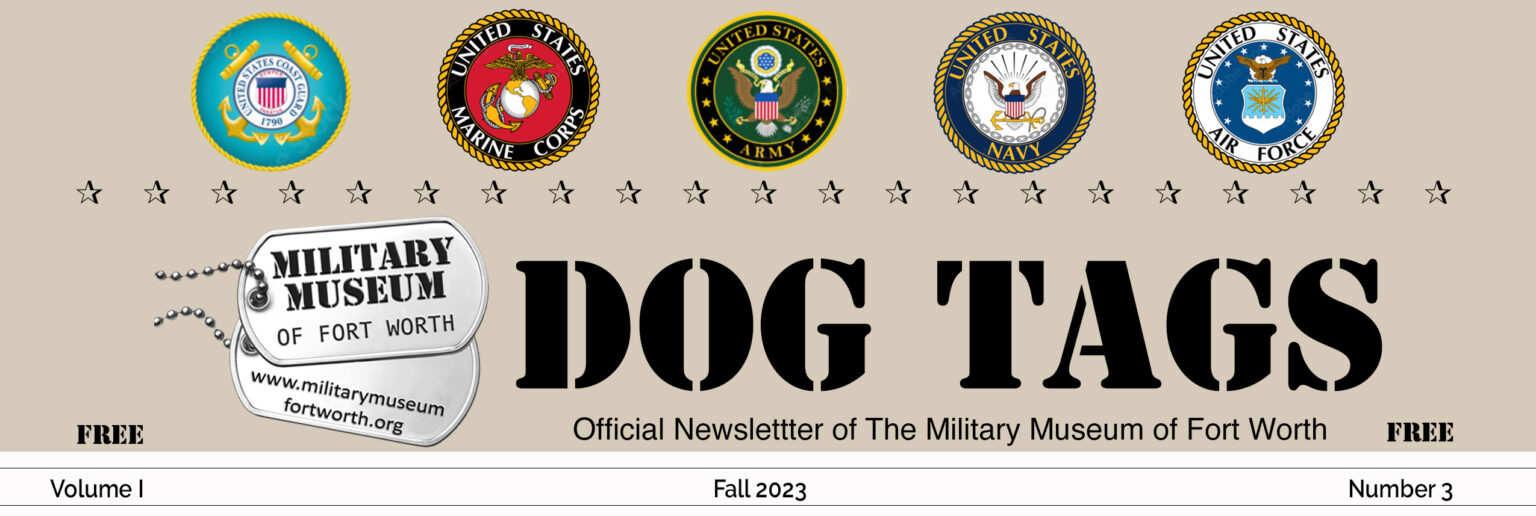
SIT REP (Situation Report)
Rodger W Brownlee
Wow! The last time we talked, we were sweltering under the heat of a full-blown Texas Summer. As I write this today, we’re enjoying the long overdue blessing of Autumn rains; always feels good, doesn’t it? Now that those searing days are already a memory I hope that everyone is feeling good, and enjoying this glorious weather.
The Museum is on a roll; Tyler has almost completed his redo of the Museum displays. The display cases donated to the Museum have been a tremendous asset allowing some extraordinary items to be displayed for the first time to their full potential. If you haven’t visited the Museum lately, make plans to do so; you will be delighted with the new additions.
We’re entering that time of year when momentous events occurred in the annals of Military History, events that we commemorate at MMFW each and every day.
Entering the display galleries of the museum, the first thing you see on your left is the mock-up of a WWI trench, and displays of memorabilia of actual participants of the “War to End All Wars”, and I’m reminded of the photos of American Doughboys throwing their tin hats into the air with the announcement of the Armistice, which occurred on the “eleventh hour of the eleventh day of the eleventh month”; November 11th, 1918; a day which we celebrate every year, and known to us as Veterans Day. This year will mark its 105th anniversary. Remember that day when you visit the WWI galleries in the Museum.
And then, a little less than a month later, we will commemorate the 82nd anniversary of the Japanese sneak attack on Pearl Harbor, Hawaii. The War to End All Wars was only 23 year in the rear-view mirror, when this singular event plunged the United States and its citizens into yet another catastrophic world war that would forever change future civilization. “Remember Pearl Harbor” was the battle-cry of the World War 2 generation, and still resonates today, as we should never forget to always “pray for peace, but prepare for war”. Military Museum of Fort Worth hasn’t forgotten, and will feature a special display during the week of December 7th, including a table-top layout of Pearl Harbor and Battleship Row in miniature, a special creation of Board Member and Special Projects Guru, Bill Leaf.
Later that same month, on December 16, 1944, the Germans launched their massive last gasp offensive in the Ardennes region of Belgium, in what would famously be known as the “Battle of The Bulge”. This battle took place during one of the most severe Winters in European history, and would forever impact every soldier who was present. Having to battle against the most severe of weather elements, while also fighting for your life against an implacable enemy, was an experience that haunted many of the surviving participants for the rest of their lives; especially whenever the weather turned cold.
These are episodes of military history in the not-too-distant past that no one should ever forget, and it’s the Mission of MMFW to keep that memory alive.
One of the things I love about MMFW is being able to meet so many interesting people. Many of our visitors are veterans, or are friends or relatives who have a connection to someone or an event on display at the museum. They all have their own personal stories and remembrances, all of which are unique and interesting in their own way, and many are just curious to know more about something they have only heard of in passing.
One of the more interesting people I have met at the Museum recently was an elderly lady who had come in with her niece, a Marine Corps vet. They were looking for a display to connect them with a relative who had also been a Marine in WWII. The elder lady was very spry and engaging, and as we chatted, I learned more about her: her name was Viola (McGregor), but everyone called her “Vi”, and next month she was going to turn 104 years old! I was dumbstruck; my own Mother was also named Viola, and everyone called her “Vi”, and had also been born in 1920; what a coincidence! So, the museum had allowed me to meet in an off-handed way, a contemporary of my own Mother. It occurred to me that “Vi” had been witness to all the same history that my own Mother had. As we finished our visit and “Vi” and her niece prepared to depart, “Vi” took out her wallet and gave a generous cash donation to the Museum. What a delightful person; one of the “Greatest Generation”, and what a privilege for me to meet her; Thank you, “Vi”! Did I say “this is one of the things I love about the museum”? Come by sometime, stick around, and I bet you’ll meet someone interesting too.
In closing, I would like to thank our Curator, and all the Board members, and Volunteers for all their hard work this past quarter. They have all gone “above and beyond” to provide a “World Class” quality museum for the public to enjoy. And as we move forward into the Autumn and Winter of this and the coming year, I’ll quote one of the mottos of Col. William O. Darby’s famous Army Rangers: “Onward We Charge”!
CURATOR'S CORNER
Tyler Alberts
Well, we are very happy to announce that we have begun some gallery expansions, after filling virtually all of the 15 display cases we received from the generosity of the Kimbell Art Museum. With the enlargement of the farmhouse courtyard, we are able to create additional wall space for the World War I and the World War II Pacific galleries. We have also been able to add display cases that enhance the World War II European gallery, as well as Korea, Vietnam and the Cold War. There have also been three special exhibits added. The first covers several of our military chaplains. The second is for Lieutenant Jerome Shapiro, a soldier of the 36th infantry Division who captured Herman Goering at the end of World War II. The third covers several of the pioneering women who flew planes with the WASPs.
Some recent donations have created a lot of excitement for the vast amount of content that each collection contained. We have seen three specific collections that were heavy with photographic content. The first being from Bob Walsh a Korean veteran along with many images from his father's collection of the Mexican Border service and his time with the 36th Division during WWI. The third collection is from Capt. Luther Laseter who created an incredible photo history of the 101st Airborne and the 1st Cavalry Divisions before being killed in action.
There have also been steady donations that are the bread and butter of our museum, the small personal groupings of artifacts that let us look into the service of an individual. We have received items that share the story of Robert Dahlmeyer who served with the eighth infantry division in the European theater. We have received the uniform and photos of Stanley Malloch an Iwo Jima Marine. There was also a nice donation of some U.S. Navy items from the Vietnam era that belong to Richard Hefner who served on the USS Lind.
Each of these donations, humbles our staff, as we learn about another soldier or sailor, or airmen, who served us all at some point during their life.
| Tyler Alberts | Co-Founder/Executive Director |
| Rodger W Brownlee | President/Newsletter Editor |
| John Kalvelege | Vice-President Director |
| Karen Garrison | Media and Communications Director |
| Trace Chinworth | Director Outreach Education |
| John T. Furlow | Treasurer |
| Mike Zamulinski | Secretary/Outreach Director |
| Bill Leaf | Special Projects/Board Member |
| Ron Lane | Board Member |
| Stacey Sokulski | Board Member |
| Dale Wagner | Board Member |
| VOLUNTEERS | |
| Paul Fraga | Gift Shop Manager |
| Colin Fish | Volunteer |
| James Warner | Volunteer |
Board Member Spotlight
LSC (SCW)* DALE WAGNER – US NAVY Reserve
Rodger W Brownlee
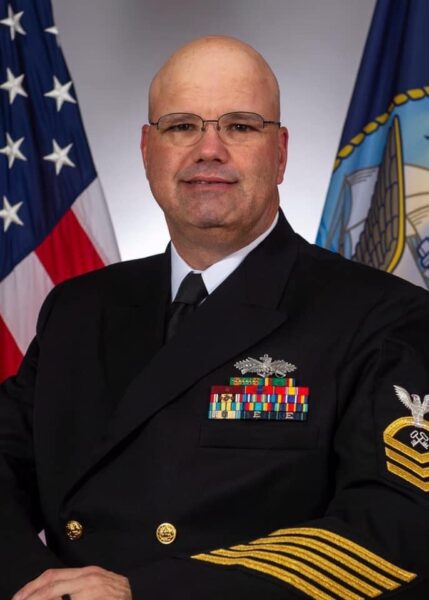 Dale L Wagner Jr. was born in 1970 in Bedford, Ohio. His family subsequently moved to Texas where Dale attended and graduated from Waxahachie, TX High School in 1988. He attended Texas Tech University in Lubbock for two years and finished his degree at the University of Texas at Arlington, graduating in 1993 with a degree in History. In 2004, he received his Texas Teaching Credentials, and has been a high school history/social studies teacher in the Burleson ISD since 2005. In 2018 Dale resumed his studies earning his master’s degree in history from Sam Houston State University.
Dale L Wagner Jr. was born in 1970 in Bedford, Ohio. His family subsequently moved to Texas where Dale attended and graduated from Waxahachie, TX High School in 1988. He attended Texas Tech University in Lubbock for two years and finished his degree at the University of Texas at Arlington, graduating in 1993 with a degree in History. In 2004, he received his Texas Teaching Credentials, and has been a high school history/social studies teacher in the Burleson ISD since 2005. In 2018 Dale resumed his studies earning his master’s degree in history from Sam Houston State University.
In December 1997, Dale enlisted in the United States Navy under the Advanced Pay Grade (APG) Program, and was assigned to Fighter Squadron 201, Naval Air Station-Joint Reserve Base NAS-JRB Fort Worth, working in the S-6 shop ordering parts for F-14 Tomcats. In 1999 he transferred to Carrier Augment Unit Southwest, finishing the APG course on drill weekends, and graduating from the APG School in New Orleans, LA.
In 2001, Wagner transferred to the Naval Mobile Construction Battalion Twenty-Two (NMCB-22) “SEABEES”, working in the Central Storeroom, the Central Tool Room, and the Material Liaison Office.
While with NMCB-22, he deployed to Iraq in 2005, stationed in Al Asad, where he earned his Seabee Combat Warfare badge. During this deployment, he handled over a million dollars-worth of construction supply transactions. When his tour was up, he volunteered to stay mobilized to help the short-staffed Ninth Naval Construction Regiment, relocating to Camp Moreell, Kuwait, where he worked procuring and shipping much needed supplies to Iraq.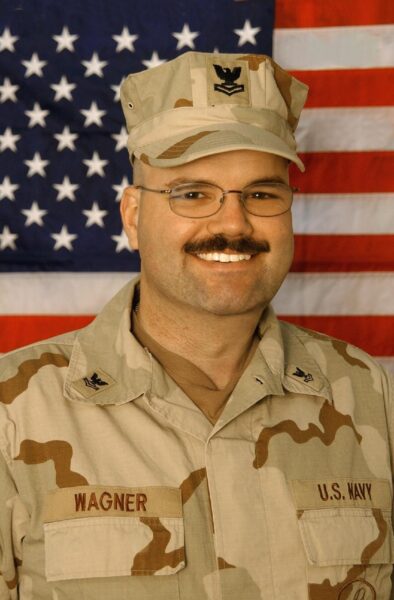
Dale demobilized in 2006, returning to NMCB-22, where upon his promotion to Storekeeper First Class, took over the position of Supply Department Lead Petty Officer.
In 2009, his unit was mobilized to Afghanistan and Kuwait. Dale landed once again in Camp Moreell, Kuwait where he and his staff were tasked with inventorying, repacking, and shipping supplies from Iraq to Afghanistan. Upon demobilization in 2010, he transferred to the Ninth Naval Construction Regiment, assigned as the Lead Petty Officer for the Supply Department. At this time, he also served as President of the Enlisted Association.
In 2013 he transferred to the NAVSUP NR FLC Sigonella HQ unit. He began as the Training Department Logistics Petty Officer, later becoming the Logistics Petty officer for the unit.
In 2017 LSC Wagner was nominated for and selected as the Senior Sailor of the Year for his high level of expertise, proficiency, and standards of excellence.In 2018 Chief Wagner mobilized again, serving for a year in the N4 Procurement Shop at Joint Base Camp Lemonnier in Djibouti, Horn of Africa. While there, he was promoted to Chief Logistics Specialist, and upon return from this deployment, became the Operations Chief.
In March 2021, Wagner spent 90 days as Acting Operations Support Officer for AD FLC SI in Sicily, and in October took over as the Senior Enlisted Advisor.
In February 2022, Chief Wagner’s education background came into play when he became the Director for the high-priority NR FLCSI Logistics Supply Representative (LSR) Program. As Director, he oversaw and managed this program, training Sailors to become LSR qualified.
As of this writing, Chief Wagner, a 26-year Navy Veteran with 5 deployments to the Middle East already under his belt, is currently on deployment to Djibouti, Horn of Africa. He holds the rank of Chief Petty Officer (E-7), and qualifications as a Seabee Combat Warfare Specialist and Master Logistics Supply Representative.
His awards include: The Navy/Marine Corp Commendation Medal (2 awards); Navy/Marine Corp Achievement Medal (5 awards); Global War on Terrorism Expeditionary Medal; Global War on Terrorism Service Medal; Good Conduct Medal Active; Iraq Campaign Medal; Joint Meritorious Unit Award; National Defense Service Medal; Naval Reserve Meritorious Service Ribbon; Navy/Marine Corp Overseas Service Ribbon; Sea Service Deployment Ribbon; Armed Forces Reserve Medal; Navy Unit Commendation Medal; Joint Meritorious Service and Military Outstanding Volunteer. He also holds awards and recognitions from various service schools, as well as numerous combat skill and MOS qualifications.
When not on active duty or deployed, Dale lives at home in Fort Worth with his wife of fifteen years, Mary Beth, and his eight-year-old daughter, Sarah. In his leisure time, he enjoys hunting, woodworking, reading, visiting museums, and spending time with his family. He is also working on turning his master’s thesis, “Operation Deep Freeze”, into a book for publication with the Naval Institute Press.
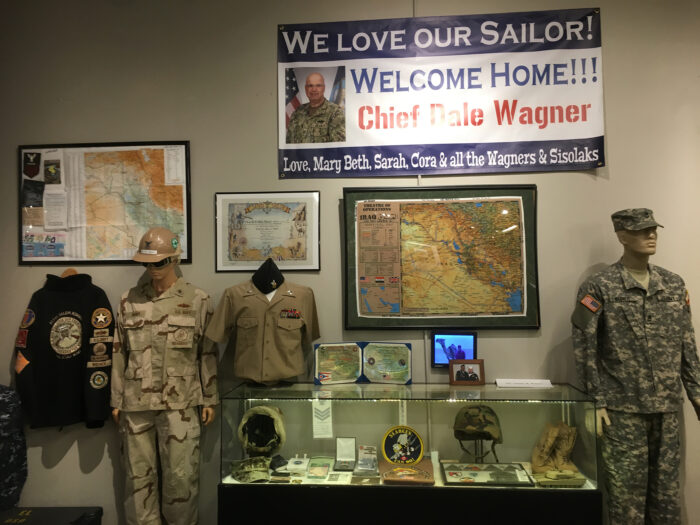 Editor’s Note: Chief Dale Wagner has been associated with Military Museum of Fort Worth for approximately 12 years and has been a member of the Board of Directors for approximately 2 years. A display of his Military service can be seen in the OIF/OEF section of the Museum.
Editor’s Note: Chief Dale Wagner has been associated with Military Museum of Fort Worth for approximately 12 years and has been a member of the Board of Directors for approximately 2 years. A display of his Military service can be seen in the OIF/OEF section of the Museum.
Of the numerous members of our Board of Directors who have served in the military, Dale is the only one still active, and is presently deployed to Djibouti, Horn of Africa. Even half-way around the world, he stays in contact and contributes to the success of the Museum. He is truly a dedicated warrior, and MMFW is very proud of his service to the country, and as a Board member. RWB
A Soldier's Story
John Kalvelage
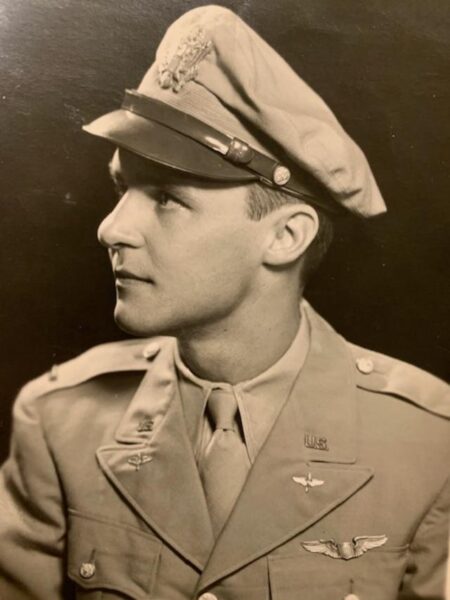 In the Vietnam section of the Military Museum of Fort Worth, is a flight suit, survival vest, and two children’s souvenir jackets belonging to Major George R. Kalvelage, United States Air Force.
In the Vietnam section of the Military Museum of Fort Worth, is a flight suit, survival vest, and two children’s souvenir jackets belonging to Major George R. Kalvelage, United States Air Force.
Major Kalvelage was a 23-year Air Force Command Pilot, who served from 1941 during World War II, through the Vietnam War, and retiring in 1966.
George’s story begins on April 30, 1919, in Levi, New Mexico, where he was born the fourth of seven children. His parents had moved to New Mexico in a futile attempt at sharecropping, working a land grant deeded to them by the US government. Promises of irrigation improvements failed to materialize, and when seasonal rains failed to appear, the only crop produced was a harvest of endless dust.
George’s father happened to be an electrician, a rarity in those days, and was able to work in the far away mines of Trinidad, Colorado to supplement the family in their destitute existence. In their later years, the seven kids remembered with fondness those lean years in the high arid plains of NE New Mexico, and the seven years when their breakfast fare consisted mainly of oatmeal.
The family, now penniless, moved back to Chicago in the mid-1920s; and in just a few years, once again found themselves mired in deprivation upon the onset of the Great Depression in 1929. Despite the harsh conditions of the times, the children attribute their success in later life to their strong German and Christian upbringing, with an emphasis on education.
The four boys were well known in Villa Park, Illinois and played with their friends on two different baseball teams. On one of the teams was the son of the Lieutenant of famous mobster Bugs Moran. The boys got the word that gangsters were good tippers and soon went to work as golf caddies at several local country clubs. The extra income meant that they probably fared better than most children throughout the depression.
During these lean years, unemployed WWI pilots were flying around “barnstorming” in open cockpit aeroplanes. Basically, these pilots landed in any available open field in or near populated areas and sold rides in their planes. George and his younger Irish twin brother, Charles, 10 and 9 years old at the time, hired one of these planes and went up for a ride. Done without parental consent, it’s unknown whether or not there were any repercussions afterwards, but it became clear in later life when both boys would say that their brush with “barnstorming” had been a life changing event. Not long after this experience, George was sent home from school for telling his teacher he was going to be a pilot, and she saying that she wouldn’t go up in an aeroplane piloted by him. The expulsion came when George responded to his teacher, “I didn’t invite you on my airplane”!
It was definitely a time when young boys especially, were caught up in anything and everything that had to do with aeroplanes and automobiles, and George was no exception. At the age of fourteen, he took his savings and purchased his first automobile for the sum of $25, a beginning of a lifelong love of automobiles.
Despite the USA’s posture of avoiding the conflicts raging around the world at the time, it was drawn into war by the Japanese attack on Pearl Harbor, Hawaii in the early morning hours of December 7, 1941. George was 22 and attending an engineering school at the time, and after the attack, he and all of the other students there were spoiling for a fight. On Monday, 8th December, the school held an assembly. They were addressed by an Army Colonel who said he was there to sign everyone up to be inspectors at Rock Island Arsenal, and if you didn’t want to do that, he would sign you up for the Infantry. Well, George knew there were no pilots in the Infantry, so he went the inspector route for a year until he could figure out a way to get into the Army Air Corps, which he eventually did.
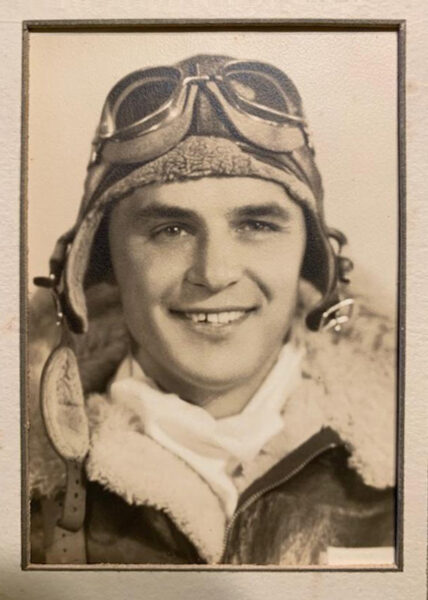 Flight training started and his basic training base was located in Vernon, Texas (one of 63 flight training bases in Texas). The mild Texas winters appealed to George, and he marked it down to a state where he would one day retire. He excelled in training and was sent to pilot’s school and a specialty training school in Oklahoma.
Flight training started and his basic training base was located in Vernon, Texas (one of 63 flight training bases in Texas). The mild Texas winters appealed to George, and he marked it down to a state where he would one day retire. He excelled in training and was sent to pilot’s school and a specialty training school in Oklahoma.
It was now the Spring of 1943, and George was a fully qualified B-24 bomber pilot, and like all his fellow B-24 pilot friends, he was raring to go to get into the war. In the brutal 1943 air campaigns ahead, many of his friends would meet their deaths, both in aerial combat and non-combat incidents. George was to be disappointed, however, being selected to teach B-24 pilots at Liberal Army Airfield, Kansas, assigned to Strategic Air Training Command (SATC). Little did he know at the time that this assignment would keep him out of combat in WWII and later in Korea. While all of this was taking place, his brother Charles had been the first to solo in his Naval Aviation class in Corpus Christi, Texas. Nineteen, Forty-Five (1945) saw George transfer to B-29 training in San Antonio, Texas for the long range bombing of Japan, however the war ended before he was sent overseas.
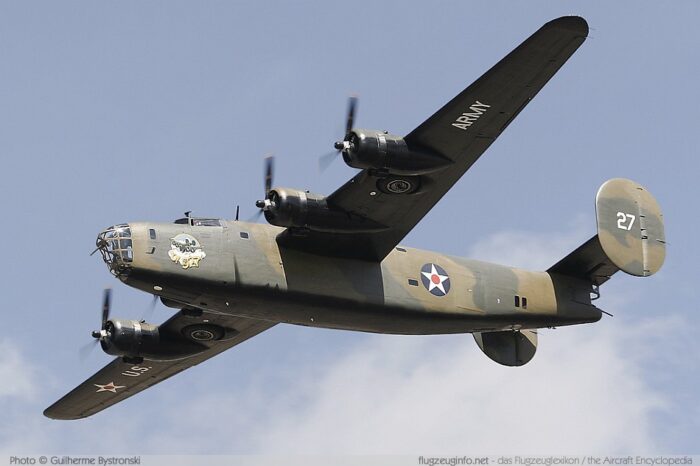 Late 1945 saw millions of American servicemen being demobilized and returned to civilian life in the U.S. In this environment, competing for available jobs would be tough, so George jumped at the chance to continue flying by taking a position with the Army Air Corps, managing air traffic coming to and from Europe to a base in Natale, Brazil. The time for going back to caddying for his gangster foursomes with his brothers was long past.
Late 1945 saw millions of American servicemen being demobilized and returned to civilian life in the U.S. In this environment, competing for available jobs would be tough, so George jumped at the chance to continue flying by taking a position with the Army Air Corps, managing air traffic coming to and from Europe to a base in Natale, Brazil. The time for going back to caddying for his gangster foursomes with his brothers was long past.
Natale saw thousands of aircraft coming back from Europe via the southern route, and George’s career in the new, now named United States Air Force (USAF), was underway. During this time, General George McDonald, previously adjutant to WWII 8th Air Force Commander General Carl Spaatz, made his way to beautiful Rio de Janeiro for a final cushy assignment in the USAF. GN McDonald was instrumental in the creation of the CIA, and George Kalvelage, now assigned as his personal pilot, made numerous trips to Washington DC in a B-17 that was “stripped down and souped up”.The long flights weren’t all that boring, as the General preferred beer over water as refreshment on board his aircraft.
Prior to his leaving Brazil in 1948, George married Wanda, a Brazilian girl of mixed European descent. 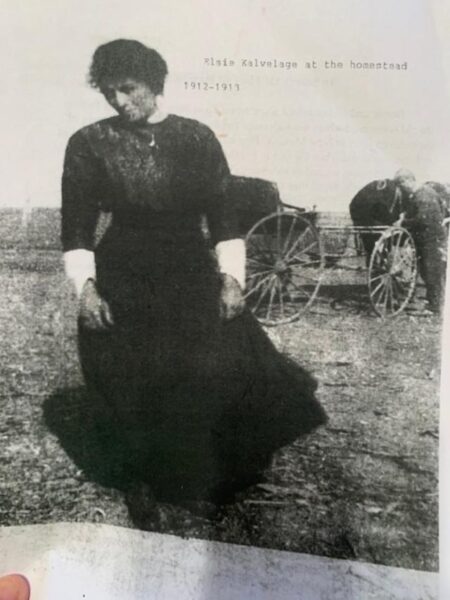 Wanda was a well-known aviatrix in prewar Brazil, and worked as a translator for the American Embassy in Rio de Janeiro. When President Harry Truman was in Brazil promoting “the Good Neighbor Policy”, he encountered George in a receiving line and asked him what he had done to promote this new policy. Without batting an eye George replied, “I married a Brazilian!” President Truman was speechless! Later that year, the young couple moved to Kearney Air Force Base, Nebraska.
Wanda was a well-known aviatrix in prewar Brazil, and worked as a translator for the American Embassy in Rio de Janeiro. When President Harry Truman was in Brazil promoting “the Good Neighbor Policy”, he encountered George in a receiving line and asked him what he had done to promote this new policy. Without batting an eye George replied, “I married a Brazilian!” President Truman was speechless! Later that year, the young couple moved to Kearney Air Force Base, Nebraska.
George was assigned to the 27th Fighter Wing of the 8th Air Force, one of the few equipped with the twin engine F-82 aircraft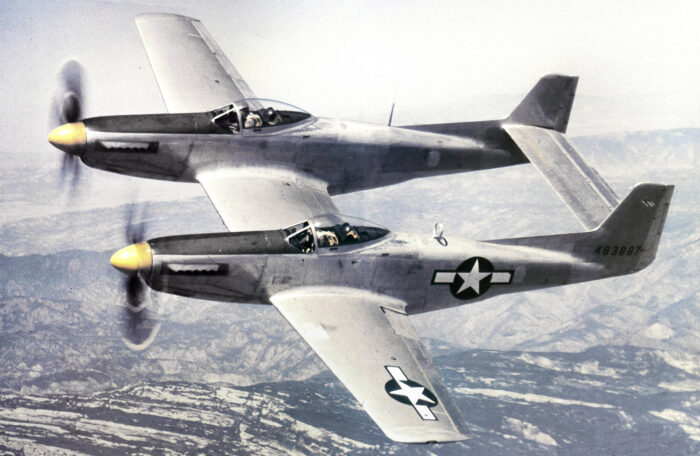 (the F-82 was a twin fuselage version of the famous P-51 Mustang). This unit was commanded by the Col. Cy Wilson, famous commander of the 20th Fighter Group in WWII (see the Cy Wilson exhibit at MMFW). When the 27th left Nebraska for Bergstrom AFB in 1950, it wasn’t long before the unit welcomed a new commander; the legendary Colonel Don Blakeslee of the RCAF, RAF, USAAC, and the USAF. During this time, George was elevated to unit test pilot, and flew the first jet that came to Bergstrom in preparation for the transition. When hostilities broke out in Korea, Blakeslee “volunteered” the 27th for deployment, telling his unit, “any war is better than no war”. The unit packed up, moved west to California, and shipped out to Korea. Lt Kalvelage did not make this move with his unit to Korea, instead, he was transferred to the United Nations (UN).
(the F-82 was a twin fuselage version of the famous P-51 Mustang). This unit was commanded by the Col. Cy Wilson, famous commander of the 20th Fighter Group in WWII (see the Cy Wilson exhibit at MMFW). When the 27th left Nebraska for Bergstrom AFB in 1950, it wasn’t long before the unit welcomed a new commander; the legendary Colonel Don Blakeslee of the RCAF, RAF, USAAC, and the USAF. During this time, George was elevated to unit test pilot, and flew the first jet that came to Bergstrom in preparation for the transition. When hostilities broke out in Korea, Blakeslee “volunteered” the 27th for deployment, telling his unit, “any war is better than no war”. The unit packed up, moved west to California, and shipped out to Korea. Lt Kalvelage did not make this move with his unit to Korea, instead, he was transferred to the United Nations (UN).
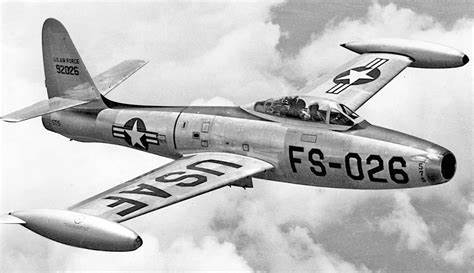 Promoted to Captain, George was made US Air Attache to the UN, and tasked with training the Portuguese Air Force in the use of new jet aircraft. This assignment was no doubt due to his experience training pilots, and flying the F-84 “Thunderjet”; not to mention that he had the language skills required to train Portuguese pilots, picked up while he was stationed in Brazil.
Promoted to Captain, George was made US Air Attache to the UN, and tasked with training the Portuguese Air Force in the use of new jet aircraft. This assignment was no doubt due to his experience training pilots, and flying the F-84 “Thunderjet”; not to mention that he had the language skills required to train Portuguese pilots, picked up while he was stationed in Brazil.
Despite the fact that the “Red Scare” was full blown and produced a sense of urgency, the required jet aircraft were not immediately forthcoming, and a relatively calm period ensued. Aircraft finally began arriving and training finally commenced and continued until the three-year assignment was completed. During this period, George achieved the rating of “Command Pilot”; the highest flight rating in the US Air Force.
In 1954 George was assigned to Larson AFB in Washington state where he was back with SATC, where a lot of Cold War patrolling took place in northwest US airspace for the next three years. This was followed by another peacetime three-year stint with SATC at Chanute AFB, Illinois, which brought him closer to home than he had been in several years. His next assignment took him back to Randolph AFB in San Antonio, Texas, doing a three-year tour until 1962. During this period, George underwent testing and training in California with the infant Apollo astronaut space program, where he earned and was awarded his “Missile” qualification badge.
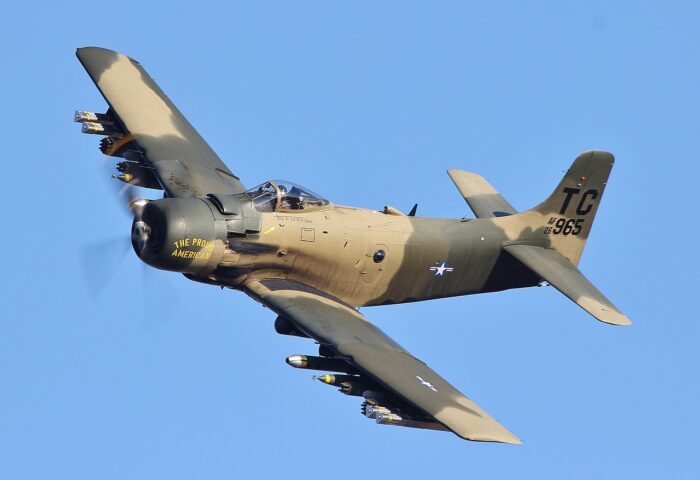 Early 1963 saw now Major George Kalvelage attached to the 18th Tactical Fighter Wing and shipped out to Kadena Air Force Base Okinawa. As Officer in Charge of Maintenance, he was tasked with setting up F-105 “Thunderchief” bases in Korat, Thailand, and overseeing the repair and testing of battle-damaged aircraft. On occasion, he filled in and flew missions with his unit.
Early 1963 saw now Major George Kalvelage attached to the 18th Tactical Fighter Wing and shipped out to Kadena Air Force Base Okinawa. As Officer in Charge of Maintenance, he was tasked with setting up F-105 “Thunderchief” bases in Korat, Thailand, and overseeing the repair and testing of battle-damaged aircraft. On occasion, he filled in and flew missions with his unit.
He returned to his prop-job roots when reassigned to the 313th Air Division, and flew A1E Skyraiders (affectionately nicknamed the Spad). For this assignment, he was awarded the Bronze Star Medal for “action against hostile forces in Southeast Asia”.
In late 1966, with twenty-three years of service and an uncounted number of flying hours to his credit in a multitude of aircraft types, he was offered promotion to Lieutenant Colonel if he would sign on for another three-year tour. He declined, citing mismanagement of the Vietnam war. He officially retired at the end of 1966.
With a life-long penchant for automobiles, George returned to San Antonio, Texas and started a successful rental car business. He remained there until his death in 2006 at the age of 87.
His youngest sister, a week before her death, and overtaken with dementia, was watching Television when some old planes appeared on the screen. She perked up, pointed to the TV and said, “my brother George could fly all those old planes and he wasn’t afraid of anything!”
Enough said.
Editor’s Note: During his numerous deployments and assignments, George and Wanda raised their own family. The author of this article, John Kalvelage, was one of five children, two boys and three girls. John was born in 1956. The two children’s souvenir “tour Jackets” on display with Maj. George Kalvelage’s exhibit, belonged to John and his older brother Paul.
Collector's Cache
John Kalvelage
THE VIETNAM TOUR JACKET
Tour jackets of the Vietnam War ushered in one of the more colorful souvenir genres in the history of warfare. Much like the non-regulation patches that were ubiquitous and revered by U.S. soldiers in Vietnam, Laos, Cambodia, Thailand, Korea, Okinawa, and Japan, these jackets existed from the beginning of the war and were produced in all of these countries.
The Vietnam war, like all others, provided the impetus for an explosion of industry, large and small that produced custom uniforms, insignia, specialty patches, and of course, tour jackets. All of the countries throughout this region, spawned industries from large clothiers down to individual tailors that went to work making any items requested by the “rich” American G.I. Given the multitude of countries involved, the various manufactures, and the personality given to each individual jacket by their G.I. owner, a discussion of variations and details becomes impossible. Each jacket was different and more often than not reflected the personality of its owner. Of the thousands produced during many years over the course of the war, coming across any two identical jackets would be an amazing find, if not an impossible one.
The manufacturers of these jackets, large and small, could usually produce anything that the American G.I. might request, or in many cases, if the G.I. lacked imagination, helpfully provide a design of their own.
Most of these soldiers grew up in the “comic book” era and were quite adept at drawing cartoons or war scenes, or at least had access to pictures or comic books they could use to relay to the local Mamasan seamstress or the larger local tailor shops what they had in mind. Some really inventive designs were drawn up by the soldiers, and hundreds of sewing machines throughout Southeast Asia were constantly busy cranking out the figments of G.I. imaginations with great skill. A famous tailor shop in downtown Saigon was known as “Cheap Charlies”, and employed many seamstresses. The known variations of tailoring produced from that shop alone are almost endless. The “non-in country” (Vietnam) tailors, located at the numerous bases around the war zone, i.e. Okinawa, Japan, Korea, Thailand, Cambodia, Laos, Guam, and so forth, all exhibit their own unique style of Needlework, design, manufacture, and production. At any of these locations, all a soldier needed to do was walk into any shop and give the tailor an idea, and it was “off to the races”. Of course, this often resulted in many interesting variations to include misspelled words, and other humorous anomalies of design interpretation.
At no time did variation of Tour Jackets exist “in stock”. The most prevalent material being silk, readily available throughout the Orient, which were available in many colors, including camouflage patterns, and used for both the exterior shell and interior lining. Other jacket materials included colored cottons, denim, uniform fabrics, and in rare cases, velour or even velvet.
The quality of the embroidery adorning the jackets was usually exquisite, but the artistic skills of the embroiderer sometimes not so much. The front of the jackets typically had the face of a Tiger on one breast, with the name of the owner, often in Vietnamese on the other. Unfortunately, the face of the Tiger, more often than not, resembled that of a common housecat; not the desired effect.
The back of most jackets usually had the map of Vietnam, or the map of the surrounding country where the soldier was based or had served, with the embroidered name of the country, and the dates the soldier served there. Rarely are the dates of more than one tour found.
Usually, the backs of the jackets will also contain a slogan or a bit of verse. One, “I Served My Time In Hell”, was a popular tome, also common to American soldiers of previous generations. Another favorite is the 23rd Psalms, often recited in some rather off-color variations, some poignant, some funny, and some from which you can sense the horrors of war.
All are personal expressions encapsulating the individual soldier’s thoughts and feeling about their experienceVietnam Tour Jackets could also be had in children’s sizes. It was a favorite send home or bring home gift from those soldiers who were dads or had a younger child as a favorite.
A slightly related garment to the Vietnam Tour Jacket is the “Party Suit”. Copied from the fashion style of Elvis Presley and other bizarre fashion trends from the home front; always featuring big collars, large bell bottoms, and wild colors. These were almost exclusively worn by Pilots, and usually included name and rank (but not serial number). They were otherwise adorned with all sorts of patches indicating many of their “activities”, clandestine or otherwise. These Party Suits were usually worn during periods of serious unwinding, which doubtless involved copious amounts of alcohol, as the proximity of instant death was never far away. The suits were so popular, that Bob Hope wore one during his tours all over Vietnam.
Hats, bowling shirts, karate outfits, robes and almost any piece of apparel that one could imagine, were embroidered for a few bucks and brought back home to the U.S.
The Tour jacket is a quick peek into the soldier’s service in Vietnam. Dates of service can be seen on Jackets with dates as early as 1962, at the beginning of America’s involvement, until wars end in 1975. Locations listed on the back of jackets can send chills down the spine of any knowing veteran, and astute military historian; My Lai, Hue 1968, Khe Sanh, Mekong Delta, Chu Lai, and on and on. All are evocative of places and battles where American soldiers lost a part of themselves, both figuratively and literally.
Many of these jackets have ghoulish cartoon characters and script that sadly portends the future hauntings for many of our American soldiers.
Each jacket is a testament to the thousands of brave soldiers who went to Southeast Asia, and hopefully came back in one piece. Sadly, many did not.
The Military Museum of Fort Worth currently has on display some fabulous examples of these Tour Jackets, souvenirs brought home from the war. They are great examples of the skill and expertise of indigenous people of the many countries in the region, who were caught up in the great conflagration that was Vietnam.
Editor’s Note: John Kalvelage, the son of an Air Force veteran who served through WWII and Vietnam, has been a Militaria Collector/dealer, Par Excellence, for many decades, and is the Vice President of the Board of Directors of the Military Museum of Fort Worth. The Tour Jackets mentioned in this article, as well as many other items on display in the MMFW, have been provided by John from his extensive storehouse of memorabilia.
THE OLD GUARD BUNCH
Rodger Brownlee
The "Old Guard Bunch" is an informal gathering of military retirees and their significant others who meet from time to time (there is no specific schedule) at the Golden Corral Restaurant at the address below to enjoy a good meal, renew old friendships, rehash our military memories, and just laugh and have a good time.
If you would like to be notified of up-coming get-togethers, or have any questions, please call or email Bill Abernathy at 817-401-9237 or Bill.Abernathy@sbcglobal.net or Wanita Lovell at 817-992-4018 or lovellsfc@yahoo.com. If no one answers the phone, PLEASE LEAVE YOUR NAME AND NUMBER.
NORTH TEXAS OLD GUARD BUNCH
Meets at
THE GOLDEN CORRAL
3517 Alta Mere
Ft Worth TX (at Alta Mere and Camp Bowie)
817-377-1034
ALL SERVICES BRANCHES ARE WELCOME
(Remember, No Schedules, Membership or Dues, Just Good Fellowship)

